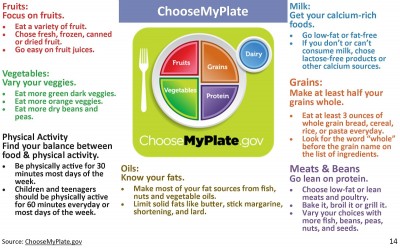NSU Newsroom
SharkBytes
Horizons
This version of NSU News has been archived as of February 28, 2019. To search through archived articles, visit nova.edu/search. To access the new version of NSU News, visit news.nova.edu.
This version of SharkBytes has been archived as of February 28, 2019. To search through archived articles, visit nova.edu/search. To access the new version of SharkBytes, visit sharkbytes.nova.edu.
Everything You Eat and Drink Matters – Focus on Variety, Amount, and Nutrition
Source: Choosemyplate.gov
FOOD GROUPS
Fruits
Whole fruits include fresh, frozen, dried, and canned options. Choose whole fruits more often than 100% fruit juice.
Vegetables
Vegetables are divided into five subgroups and include dark-green vegetables, red and orange vegetables, legumes (beans and peas), starchy vegetables, and other vegetables. Choose vegetables from all subgroups.
Grains
Make half your grains whole grains.
Grains include whole grains and refined, enriched grains. Choose whole grains more often.
Protein Foods
Protein foods include both animal (seafood, meat, poultry, and eggs) and plant sources (nuts, beans and peas*, seeds, and soy products). Choose a variety of lean protein foods from both plant and animal sources.
*Note: Beans and peas are also part of the Vegetable Group.
Dairy
Move to low-fat or fat-free milk and yogurt.
Dairy includes milk, yogurt, cheese, and calcium-fortified soy beverages (soymilk). Choose fat-free (skim) and low fat (1%) dairy foods.
Oils
Oils are part of healthy eating styles because they provide nutrients for the body, like fatty acids and vitamin E. They also enhance the flavor of your food. Some oils are eaten as a natural part of the food such as in nuts, olives, avocados, and seafood. Other oils are refined and added to a food during processing or preparation such as soybean, canola, and safflower oils. Choose the right amount of oil to stay within your daily calorie needs.
For more information on oils, click here.
